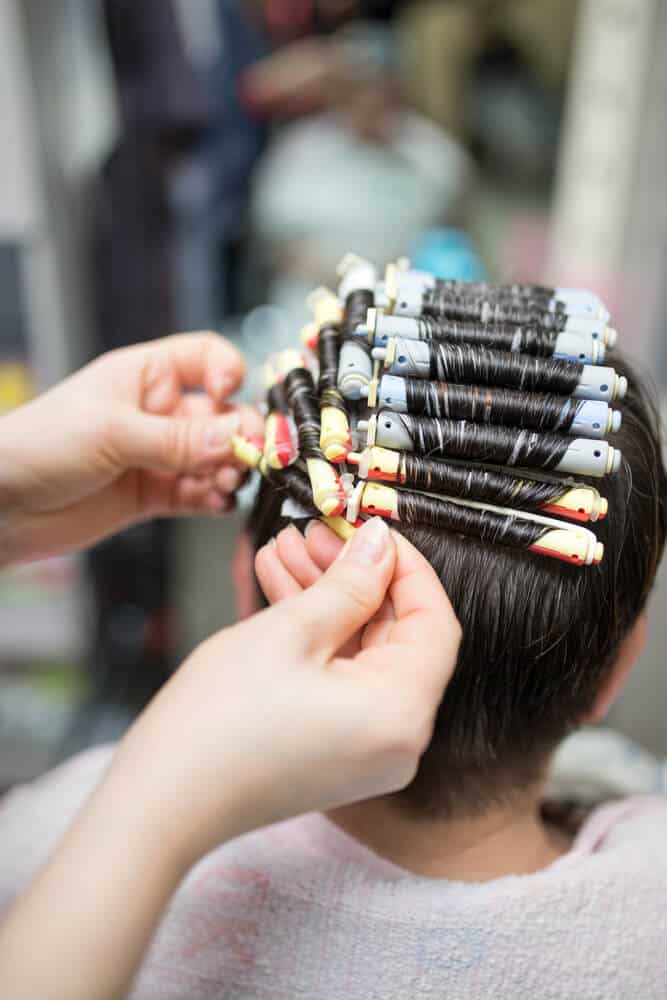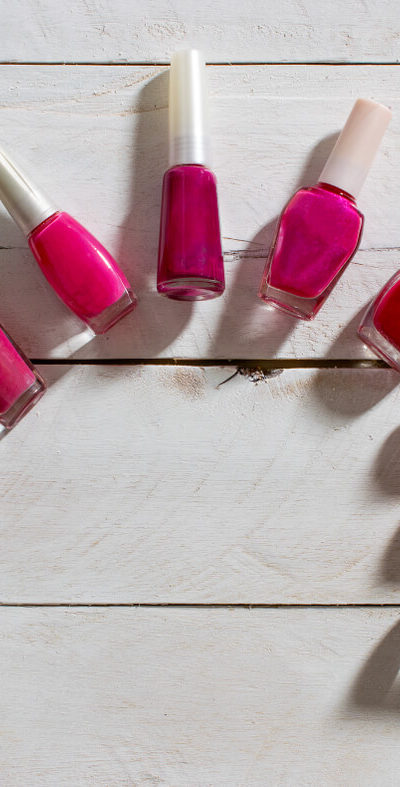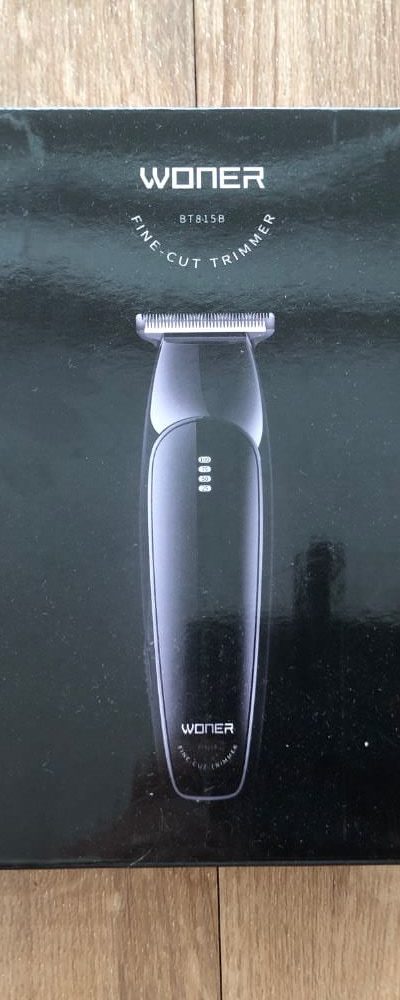Perms, or what is also known as a permanent, involve a process in which a hairstylist chemically alters your hair to produce waves or curls. Perms, like long-anticipated vacations or first dates, can turn out wonderful or turn into a nightmare. Ask all the right questions and do your research to make sure you’re happy with your perm if you decide to get one.
How Long Does Hair Need to Be in Order to Be Permed?
It is possible for hair to be too short to receive a perm. While there isn’t a specific measurement that stylists go by, hair does have to be long enough to wrap around the rods that are used for perms. Some hair professionals state that hair should be able to wrap around a perm rod twice while others say that one and a half times is enough.
For even a small rod, the hair will likely need to be at least an inch long for a successful perm. Really short, spikey hair probably isn’t long enough. According to the American Academy of Dermatology, hair grows about half an inch each month. If your hair is super short it may be worth it to wait even a few weeks for it to grow out a bit. Larger rods for bigger curls would require hair to be several inches long.
What Types of Perms Can You Get on Short Hair?
The following information briefly discusses a few of these perms and how easy it would be to have one done on short hair.
- Body Wave – This type of perm produces waves instead of tight curls. Since larger curlers are used, it won’t work for really short hair.
- Pin Curl Perm– These perms generally don’t last very long and are specifically for medium or short hair. They provide a lot of bounce and volume.
- Root Perm – The perm is basically just given at the root level. It is often used to give body to shorter hairstyles.
- Spot Perm – A person may want to add body or curls in specific areas. This will normally work with shorter hair but requires a skilled stylist to do it right.
- Multi-Textured Perm – This creates different types of curls or waves at different levels. This would be more difficult with really short hair.
- Volumizing Perm – This type is used to create volume instead of curls. This works well on shorter hair.
- Spiral Perm – These are sometimes referred to as corkscrew perms. These are usually done on medium-length or longer hair.
What are Some Challenges When Perming Short Hair?
There are a few things to pay close attention to when perming short hair. Most people with short hair want to avoid the “old lady” look with short tight curls close to the head. Iles Formula provides a few good tips to avoid this from happening.
Choose the right size rod when perming hair. If the rod is too large, there won’t be a defined curl pattern in the hair. If the rod is too small, then you’ll end up with curls that are too tight. To avoid this problem choose a stylist who has experience perming short hair.
Curling your hair will automatically make it appear shorter than when the hair is completely straight. If the hair is already fairly short, to begin with, this may be a problem for some individuals. You may want to test this out before getting a perm. Using a curling iron, curl your hair into the size and type of curls you’d want to have if you got a perm.
If you decide it doesn’t look right or it’s just too short, you may want to wait a month or two until your hair grows out a bit more. If you do like it, make sure to get a picture taken that you can show the stylist who’ll be working on your hair.
Are There Times When You Should Avoid Perming Short Hair?
There are a few specific times when it is not advised to perm your hair. For starters, people who have short hair are more likely to get it cut and styled often. If you like changing your look and style on a fairly regular basis, a perm may not be for you. A perm will normally last for several months. Depending on your hair type, you may be stuck with permed hair until it’s cut out.
No matter if your hair is long or short, it shouldn’t be permed if it is damaged. Hair can get damaged in a lot of ways. A bad color job, excessive perming, and using too many types of products with harsh chemicals can all damage hair. If you have damaged hair, you may want to wait a few months until the damaged part can be cut off before perming. To avoid excessive damage, don’t perm your hair if you’ve recently had it colored or bleached.





